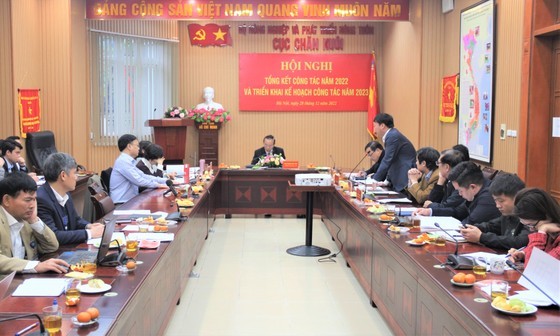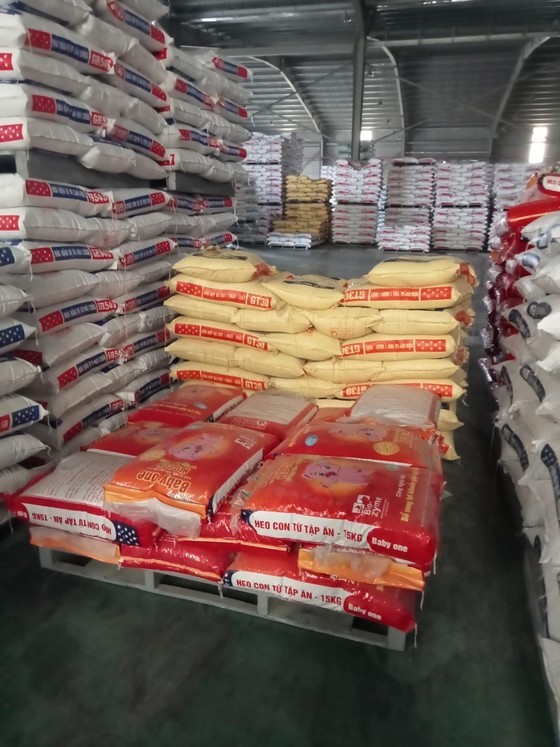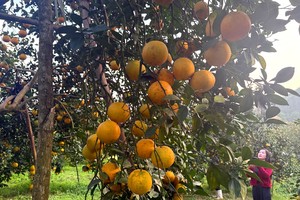 |
At the conference of the Ministry of Agriculture and Rural Development |
Director Duong Tat Thang made the statement at a conference to implement the 2023 plan for the livestock industry held by the Ministry of Agriculture and Rural Development yesterday.
According to the direction of the Ministry of Agriculture and Rural Development, the Department of Livestock Production and units of the Ministry of Agriculture and Rural Development will coordinate with a number of corporations to deploy a model of joint production of animal feed and feed ingredients in Central Highlands provinces, said Mr. Thang. At the same time, these above-mentioned ministries, departments and units worked with a number of other advantageous localities to develop animal feed ingredients, step by step proactively domestic raw materials to reduce the dependence on imported animal feeds.
Livestock in Vietnam is growing strongly, but each year it has to spend up to US$9 billion-$10 billion to import agricultural products and raw materials for animal feed of all kinds.
The country presently has a total herd of about 28.6 million pigs, up 3.2 percent; 531 million poultry, up 1.4 percent; roughly 6.53 million cows, up 1.9 percent; plus, live meat production reached about 7.05 million tons, up 4.8 percent compared to 2021.
However, according to Mr. Duong Tat Thang, the country’s livestock sector is facing fluctuations in the supply of animal feed; therefore, the country has to import from foreign countries.
Because of dependence on imports with many price fluctuations and transportation costs, the cost of livestock is high due to the cost of animal feed accounting for about 70 percent; worse, the disruption of the supply chain is likely to happen.
Mr. Thang disclosed that the domestic supply of input materials for animal feed such as corn, and soybean is only about 30 percent-35 percent .
Therefore, the solution is to review each kind of livestock for the proactive supply of the feed ingredient source by closely coordinating with businesses to deploy models of association for animal feed production, said Mr. Thang.
 |
Vietnam will build areas for producing animal feed ingredients with the aim to reduce reliance on imports |
Meanwhile, Deputy Minister of Agriculture and Rural Development Phung Duc Tien suggested that along with ensuring enough food for the domestic market, it is necessary to aim at promoting exports because the potential is huge. Currently, the livestock industry has only a few products that are enough for export, such as bird's nests to China, chicken to Japan, pork and suckling pig to Hong Kong (China), and thin pork to Korea.
A leader of the Ministry of Agriculture and Rural Development said that creating an open market is the driving force to remove difficulties for the current livestock industry and towards growth.
Vietnam is tending to increase the import of animal feed. In 2021, Vietnam spent nearly US$10 billion buying animal feeds. In the first 11 months of 2022, it is estimated that the Southeast Asian country has imported about $8.9 billion of animal feed, poultry and all kinds of raw materials.
According to the Animal Husbandry Association of Vietnam, with an average growth rate of about 11 percent-12 percent, in the next 5 years, Vietnam needs about 28-30 million tons of raw materials for animal feed production each year.
It is forecasted that in the near future, if it cannot control domestic sources, on average, Vietnam has to import up to $12 billion-$13 billion of raw materials for animal feed production each year.
























